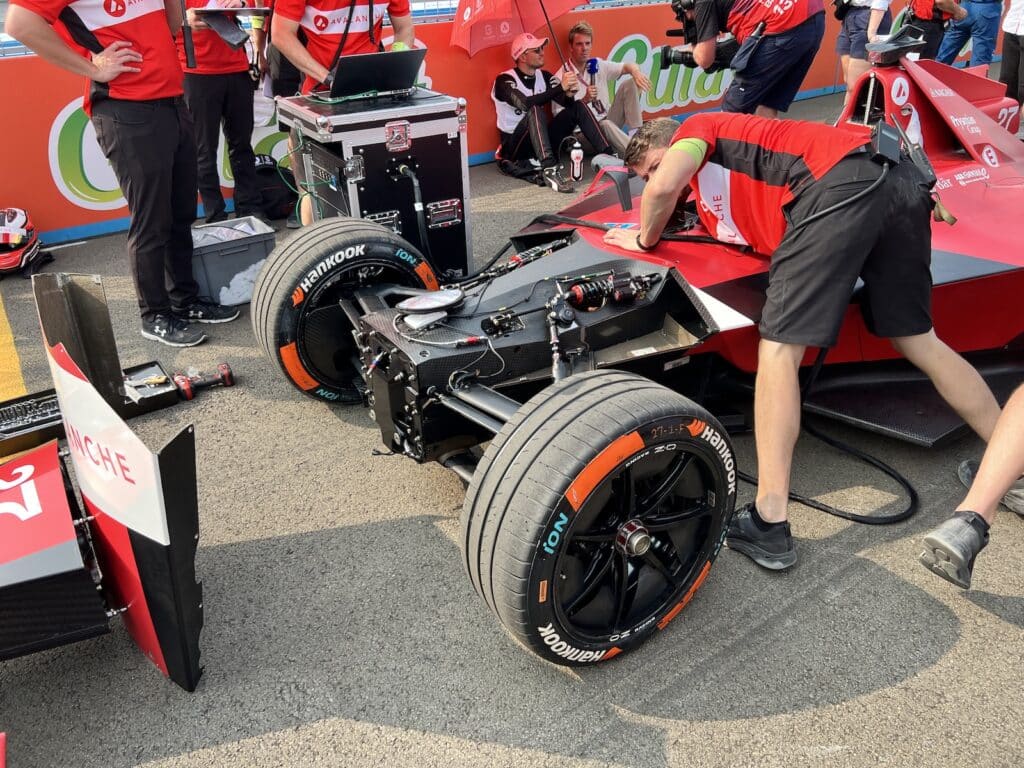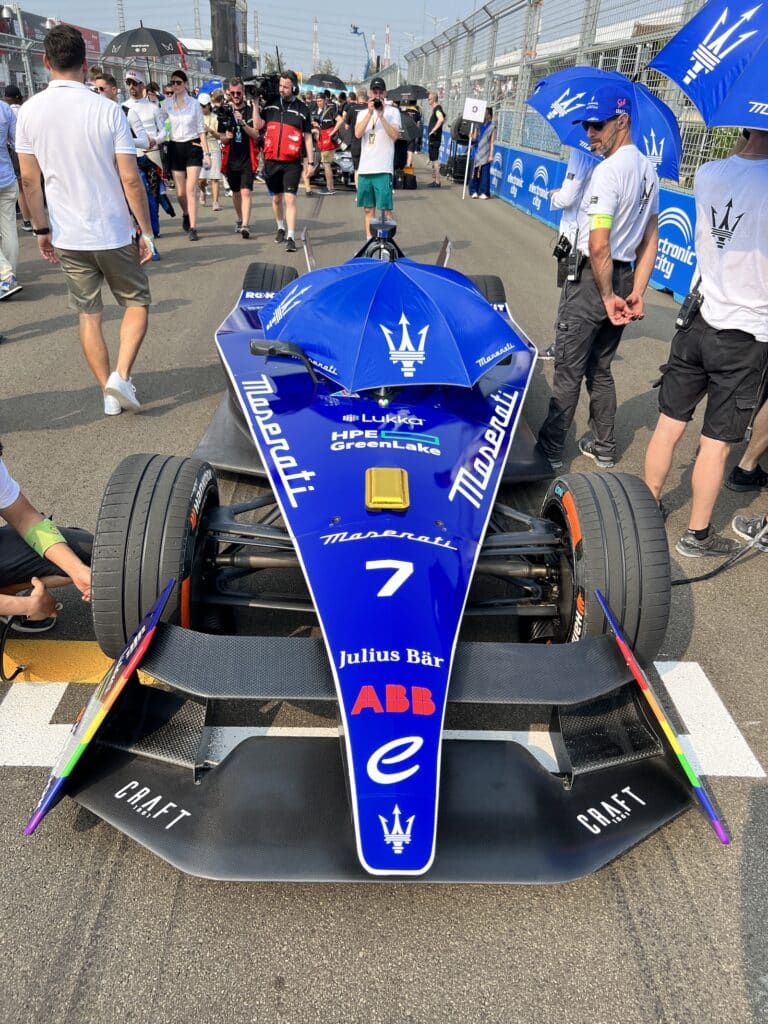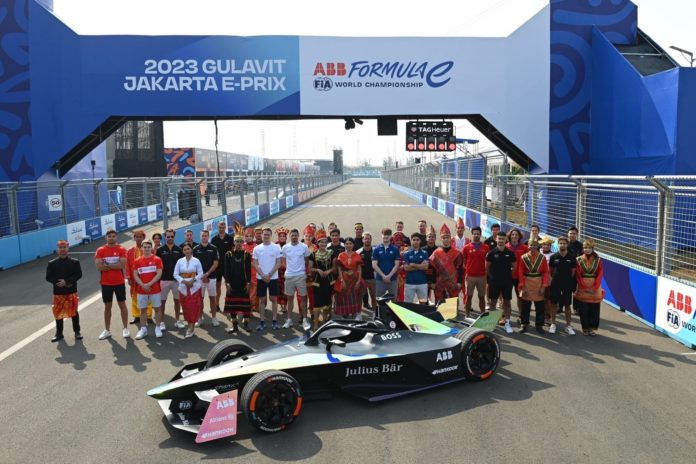Auto racing has always been a bit rakish and irresponsible. In the early days, automobiles themselves were playthings available only to the very wealthy, who would go out and risk their lives (or their chauffeurs’ lives) in speed contests.
In the modern era, racing can seem like a waste of precious fuel, or at least tone-deaf to pollution and climate concerns. Whether or not that’s valid, motorsports have always come in for some criticism along those lines, usually from people who have little to do with the sport.
The counterpoint has always been that by striving for performance on the track, automakers learn lessons that are then applied to make everyone’s street car a better machine. Motorsports often leads in safety development, engine efficiency, and longevity of parts. That’s not always true, but it’s true enough to be valid. Still, racing has never been what anyone would call “sustainable,” or at least not until now.
Net Zero from Day Zero
FIA’s ABB Formula E World Championship electric racing series was conceived as a response to the electrification of the automobile industry, and it is part of a general effort from FIA to develop the latest technology in racing.
That effort also includes increasing use of hybrid engine tech in the organizations premier Formula One series. But as an all-electric series, Formula E was conceived to be something different – a showcase that racing could be pursued with net zero carbon footprint.

“We were the first in the world to achieve net zero carbon since inception,” said Julia Pallé, director of sustainability for Formula E, “which means that we’ve been measuring our carbon footprint since the very first race in Beijing. We’ve been putting in place some measures to reduce the carbon footprint of the championship. Then for what was unavoidable, we decided to purchase carbon credits.”
Running a worldwide championship racing series is carbon-intensive at the best of times. Massive amounts of gear and people have to be moved around the globe to bring the show to places as diverse as Cape Town, Jakarta, Hyderabad, Sao Paulo, Monaco, and Portland, Oregon. The Formula E team calculates the carbon footprint of every aspect of the series, from track setup to spectator travel.
“It includes all the logistics to travel around the world with us, the cars, the batteries, the teams, and so on,” Pallé said. “And we account for all the spectators that attend the events, wherever they come from. We have surveys to understand where people are coming from. Then we think about the food that is served on the events, and all the event infrastructure from the fences to the grandstands and so on.”
Recyclable Race Cars
What may be the most innovative part of the program is that the Formula E racing car is designed to be recycled. It’s an idea called “circularity.”

“Circularity is basically a concept where you think about end of life of the product while designing it,” Pallé explained. “That’s the power of circularity because if you have the end in mind, you are able to design the product in a better way to make sure it’s going to have a proper end of life.
“The way we’ve been designing the cars is all the carbon fiber that was in the chassis is already recycled. We collect the broken parts and when the chassis will not be used anymore, it will be recycled again into new carbon fiber. That’s the beauty of it. It’s an industrial process that we had to go and find in the aerospace industry.”
The series even recycles its used tires to reclaim carbon. Recycling tires has formerly been about shredding the rubber for re-use, or reclaiming energy from the hydrocarbons, but Formula E is using a process to make new tires from the old materials.
“It’s an existing process but it’s a new technique,” Pallé said. “It’s a chemical process that is called pyrolysis. You reclaim the carbon black and you can reinsert it to the tire. It’s something that takes us above and beyond.”
Recycling spent EV batteries is a critical part of the program as well, and of interest to every automaker because of the mineral content of the cells.

“For the batteries, it’s really about the cells,” Pallé observes. “It’s the silver bullet in terms of recyclability. We’ve been working with Williams so that the battery cells are going to be repurposed every other season. We’re in season nine right now, so season nine cells will basically come back in season 11 and season 10 cells will come back in season 12.
“We can do that because there’s been such great improvement in terms of the technologies to recycle the metals, including the lithium. Over 95% of the metals are recyclable and with the lithium we’re probably over 85%, close to 90%.”
Delivering a clean show
The key value of Formula E is that sustainability doesn’t have to mean a compromised product in any way. The racing is close — usually closer than with traditional racing cars — and most Formula E drivers have backgrounds that include Formula One or other FIA world championship racing experience.
Formula E racing is also strategy-based, as each car starts the race with only enough battery capacity to finish about 60 percent of the distance. Drivers have to manage the regeneration system, just like on a street EV, to have enough power to finish and win.
“Our message, especially for the American audience, is that you can be sustainable and still deliver the best entertainment,” Pallé declares. “What we are constantly trying to show is that there’s no compromise between the racing side and the reason side of the championship.
“There’s overtaking, there’s contact, there’s drama, but all of this is in zero-emission cars, fully charged by renewable energy at certified sustainable events by the international standard for sustainability. You get really the best of both worlds, and there’s no compromise.”

